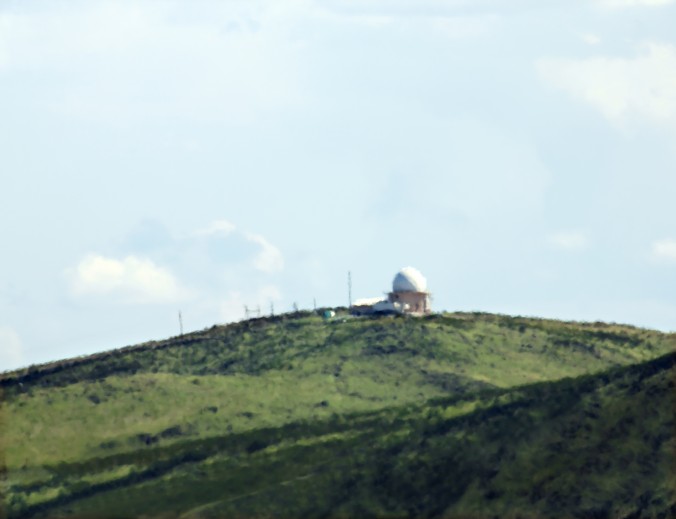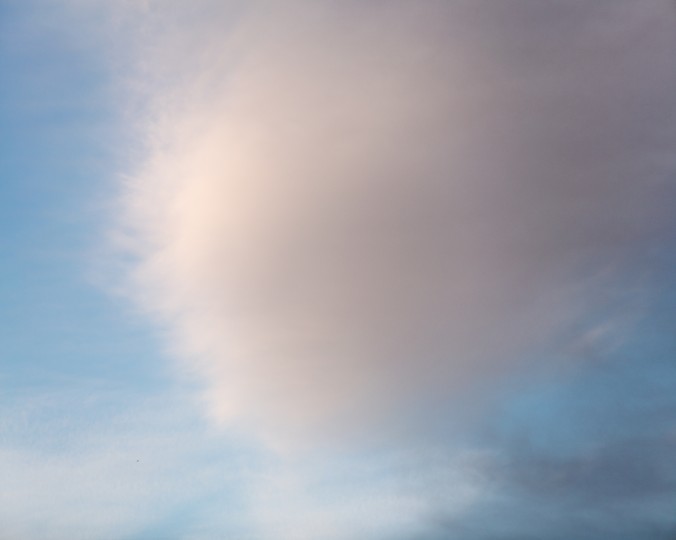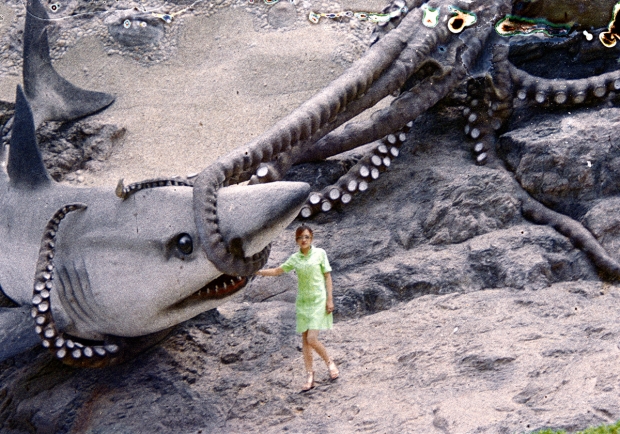“What I personally want out of art is to help us see the historical condition we are living in.”
Dark Matter makes up around eighty percent of the universe, yet we cannot view it directly, we can only detect it through the effect that it has on objects that reflect light. Trevor Paglen employs this metaphor to reflect the way he approaches the framing of the visual aspects of the secret world of global covert operations. Paglen, who graduated from SAIC with an MFA from the Art and Technology department in 2000, returned to Chicago for the first time in early March to speak in the Rubloff Auditorium as part of the Visiting Artist Program’s Distinguished Alumni Lecture series.
After SAIC, Paglen went on to a PhD in Geography at U.C.-Berkeley where he developed a thesis that later turned into an art exhibit and book published in 2009, Blank Spots on the Map: The Dark Geography of the Pentagon’s Hidden World. Growing up on U.S. military bases himself in the USA and Germany perhaps influenced his particular understanding of these sequestered social realms. Focusing on secret military bases in the U.S., he developed a technique of using telescopes to photograph distant hidden sites. He frequently uses a 600mm Orion refractor telescope connected to his camera to capture images across landscapes; as the light is travelling through our atmosphere rather than the vacuum of space, several frequencies become blurred, such as in Chemical and Biological Weapons Proving Ground (2006) in Dugway, Utah, shot from 42 miles away. The stretched and distorted wavelengths also serve as an aesthetic reference to the confusion and interference of what he terms the “bureaucratic sublime,” the infrastructures of secrecy. He likens this stretched imagery to that of Turner paintings processing the light and speed of modern travel at the turn of the 19th century.

The secret machinations of our world where more than 850,000 people have top-secret clearances is clearly a contradiction. In fact, Paglen defines secrecy not just as what you are not allowed to know, but rather “infrastructures and institutions, things like the CIA, or the NSA, economic institutions like the so-called black budget in the United States. It also is composed of social engineering institutions, such as the security classification system, legal institutions such as the FISA court in the state secret precedent to the United States.” Paglen exposes the cracks of what it is possible to observe. For example, by recognizing the differences in international regulations regarding businesses, individuals and states, he was able to pinpoint the office locations and flight operations of front companies used by the CIA. Because civilian companies need to have clearances to land at military air bases, he was able to follow the (publicly accessible, by request) aviation paper-trail and use the account of CIA abductee Khaled el-Masri to locate and photograph a secret CIA prison located just outside of Kabul, Afghanistan.
An assortment of patches that represent covert military units make up his 2007 book I Could Tell You, but Then You Would Have to Be Destroyed by Me. He compares the patches to the Mythraic Mysteries system of elaborate symbolic languages recognizable only to insiders. For example, a common badge with the letters NKAWTG stands for “no one kicks ass without tanker gas.” One badge for a special unit nighttime surveillance unit incorporated the literal orbital path of a satellite in yellow stitch. Paglen was able to use it to track, locate and photograph the satellite. He revealed in the talk that he actually saw a recent government memo that suggested to secret operations units to longer incorporate references to real information within the badges, due to this instance. One recent patch he showed in the lecture spelled out “Don’t Ask! NOYFB” (none of your fucking business).
Now that there is a lot more assassination via drone — e.g., the drone wars in Afghanistan, Yemen, and Somalia — most of the pilots that operate these missions are based in Nevada. Assassinations are controlled using satellites in orbit. The drone that was shot down in Iran in 2011 is direct evidence that the U.S. military infrastructure has moved into space. For several years Paglen has been photographing the sky within the Nevada Test and Training Range. With a similar aesthetic to Steiglitz’s Equivalents series of dramatic clouds, Paglen’s colorful sky-scapes are marked with a single fleck. The dark, not-at-first noticeable pockmark is a drone, and the clouds present in the images are often streaked with the drone’s contrails.
Paglen’s research into secret operations led him to photograph the secret satellites that the U.S. has placed around the world. By referencing Space-Track, an online databank of bulk data of all the satellites the military monitors and comparing that to his own empirical observations and those of amateur astronomers, he located and photographed secret satellites, such as the geostationary U.S.A. 202 satellite which sits just behind the Thorai 2, the satellite that runs most communications for the Middle East.

Last year he took his project into outer space as well. He etched a series of images into a silicon chip, placed it within a gold-plated aluminum canister that was attached to a communications satellite, the Echostar XVI, and launched into space. In a kind of echo of Carl Sagan’s Golden Record, Paglen’s The Last Pictures shows humanity not only at its best. The capsule is designed to last for a billion years, joining the raft of materials orbiting the earth, and serving as a sort of communication to whatever intelligence may happen upon.
“What I personally want out of art is to help us see the historical condition we are living in,” he told the auditorium. The condition that Paglen reveals is fractious and paranoid, out of focus, and romantically obsessed with the symbolic.








